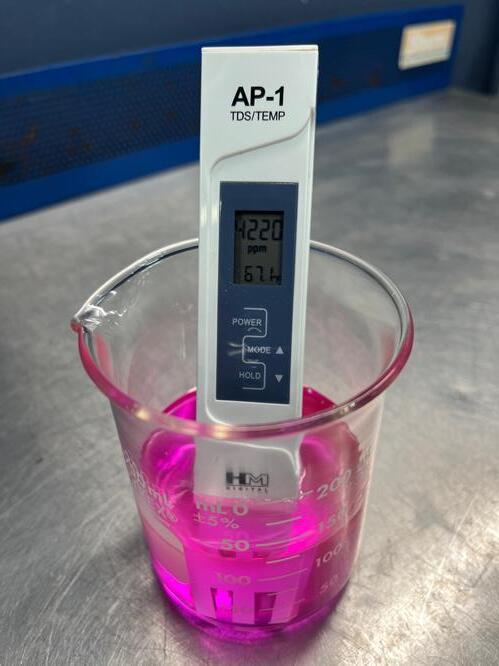
4 minute read
June 2023 Hybrid & Electric Vehicle Corner
from June 2023 NACAT News
by NACATNews
By Curt Ward, Professor at Joliet Junior College
The Constant Change of Electric Vehicle Technology
As I write this article, we are in the last week of the spring semester. Next week we will graduate our sophomores and send them into the ever-changing world of automotive technology. The fast pace of change is particularly true in electric vehicle technology. This is one of the main reasons I enjoy researching and teaching this subject. In this article I will highlight two areas of change that I have explored during the past semester.
I recently had the opportunity to explore the features of 2022 Tesla Model “Y”. One of the most interesting changes I found was in the base electrical system. The 12-volt battery that had been used in earlier models has been replaced with a 16 Volt Lithium-Ion battery (See figure 1 – Lithium-Ion battery). The battery was labeled as 12-volt, however, a quick voltage test between the jump-start terminal and ground showed 15.5 volts when the vehicle was in the “Ready” mode. I later learned that many of the early batteries were mislabeled.

Figure 1: Lithium-ion Battery
The battery is very small; about the size you would expect to find on a motorcycle. According to the label, the battery has a 6.9-amp hour rating. This seems small, however, after the contactors are closed, the high-voltage battery provides power to the system through the DC-DC converter. The Tesla service information provided some interesting insight into the battery. The first, and most obvious, the vehicle cannot be used to jumpstart another vehicle. The second, related to starting the vehicle if the 16-volt lithium-Ion battery is dead. There is a very specific process, using a 12-volt jump-box, to get the vehicle into the “ready” mode. Lastly, after replacing the Lithium-Ion battery, the firmware must be reinstalled. These processes are very different than the same model before it that used a 12-volt lead-acid battery. It is also very clear that the average individual on the street is no longer going to be able to change their own battery.
The second vehicle I recently had the opportunity to explore is the Hyundai Ionic 5. While under the hood, I noticed the two cooling reservoirs had different types of coolant (See figure 2 – Coolant reservoirs). The following is what I discovered. The cooling reservoir that contains the blue coolant is for the battery. Hyundai refers to this reservoir as the low continuity water coolant reservoir. When researching this coolant, I found it to be premixed and uses deionized water. The Hyundai owner information says that the use of this coolant is to prevent a loss of isolation if there is a coolant leak internally in the battery. The second reservoir, that Hyundai calls the coolant reservoir, is for the rest of the systems and contains a pink colored coolant. When researching this coolant, I also found it to be premixed and it also used deionized water. Both coolants are different in color from the Hyundai coolant that has been used for the last couple of years. The price difference between the two coolants was eye catching. The blue coolant retails at twice the price of the pink coolant.

Figure 2: Coolant Reservoirs
My research into low continuity water coolant was the most interesting part of the exploration. I learned that the level of dissolved solutes in the coolant mixture is what affects the level of continuity in the water. Dissolved solutes include salts and minerals that are measured in units of parts per million. I purchased a TDS (total dissolved solutes) meter and tested a variety of premixed coolants (See figure 3 – Coolant testing). I was very surprised to learn that the premixed coolants we have on the shelf varied widely in the level of dissolved solids. I believe that the lesson learned from this research is very simple; it is important to use the proper coolant in the correct system to prevent unintended failures.

Figure 3: Coolant Testing
I will finish this article with the same offer I make after each of my presentations. If you are interested in getting started in the process of adding hybrid and electric vehicles to your curricuulum or want more information, please feel free to reach out. I am more than willing to sit down in-person or online and share my experiences. Are you looking for a classroom textbook? Reach out to Pearson and ask for a review copy of the all-new Electric and Hybrid Electric Vehicle text that Jim Halderman and I co-authored. It is a comprehensive text covering all the latest information on the subject.



